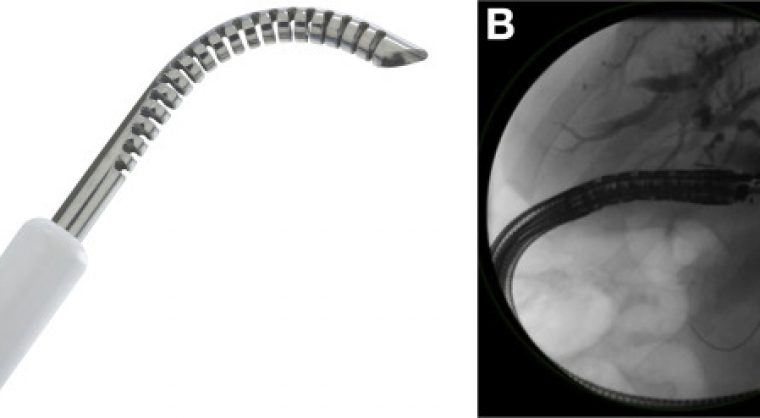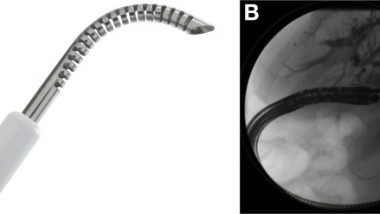
Joo Ha Hwang, MD, PhD, FASGE
Member, AGA Center for GI Innovation and Technology
Stanford University Medical Center
If you haven’t yet read the AGA White Paper Interventional Endoscopic Ultrasound: Current Status and Future Directions, published in the January issue of Clinical Gastroenterology and Hepatology, below are the key points from the paper. For each area highlighted, the white paper reviews the current published literature and identifies areas where innovation is needed to help advance the field of interventional EUS.
EUS-guided access
EUS-guided access is a rapidly evolving area where EUS-guided interventions are being applied to access the pancreaticobiliary system, gallbladder, pancreatic pseudocysts and walled-off necrosis by placing lumen apposing metal stents or other expandable metal stents. Although there has been rapid growth of EUS-guided biliary access, drainage procedures, and entero-enteric anastomotic procedures, prospective randomized trials are lacking to prove that these interventions result in improved clinical outcomes. Given the high cost of the stents used for these procedures, prospective data on the clinical and cost efficacy of these procedures would be of great benefit. Furthermore, the white paper addresses the many needs and opportunities in improving EUS-guided access procedures.
EUS-guided ablation
Tumor ablation by EUS guidance is also an area that has clinical potential that can benefit from further innovation. Currently EUS-guided tumor ablation is being evaluated for the treatment of esophageal tumors, solid pancreatic tumors and pancreatic cysts. The most experience in EUS-guided tumor therapy is for the treatment of solid pancreatic tumors where EUS-guided injection therapy, radiofrequency ablation, photodynamic therapy, high-intensity focused ultrasound and laser therapy have been investigated in pre-clinical and some clinical studies. The application of EUS-guided radiofrequency ablation (RFA) for ablation of small functional pancreatic neuroendocrine tumors have demonstrated promising clinical results in small pilot studies. However, larger comparative studies are lacking. Safe and effective treatment of pancreatic cysts was also identified as high-priority clinical need that could potentially be addressed with EUS-guided ablation.
Endo-hepatology
Expansion of EUS-guided interventions and advanced EUS imaging to address the diagnostic and therapeutic needs for the management of liver disease is another area that is rapidly evolving. Given the increasing incidence of non-alcoholic fatty liver disease (NAFLD), there is a growing need for liver biopsies, portal pressure measurements and imaging, which can all be performed by EUS. Adequate tissue acquisition using core biopsy needles have been demonstrated in multiple studies and offers several advantages over percutaneous liver biopsies such as real-time ultrasound guidance and the ability to sample a larger region of the liver. In addition, advanced imaging with shear wave elastography and endoscopic evaluation of varices can be performed during the same endoscopic session. Also, there is now the potential to perform direct EUS-guided portal pressure measurements.
Interventional EUS will continue to evolve with further innovation of clinical procedures and technology. The white paper provides the framework for how this field can further develop and gain broader adoption. It is important for GI societies, physicians and industry to continue to work together to advance the field of interventional EUS.
This white paper originated from a session on interventional EUS at the 2019 AGA Tech Summit held in San Francisco, California, organized by the AGA Center for GI Innovation and Technology. Registration for the 2021 Virtual AGA Tech Summit is now live.













